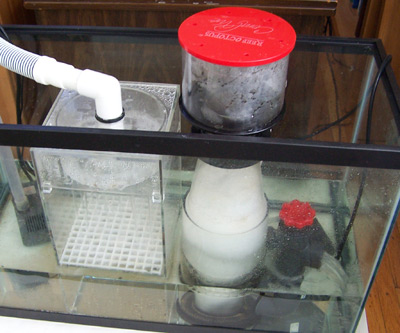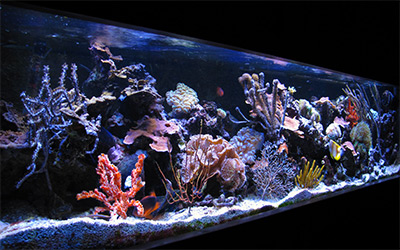I was recently perusing a popular saltwater aquarium forum and came across a post from a novice hobbyist who is considering making the switch from freshwater to saltwater aquarium keeping. He had heard that the saltwater side of the hobby can be exorbitantly expensive and wanted to know which of a list of devices other forum members would consider indispensable to success. Among the devices in question were UV sterilizers, ozonizers, biopellet reactors, GFO reactors, ATO systems, and various and sundry other gadgets.
As you might imagine, responses varied considerably depending on the individual’s unique circumstances, experiences, and preferences. It was clear that everyone who offered a recommendation meant well and genuinely wanted to help this person get started on the right foot—and most did indicate the devices they consider worthwhile investments. However, a few offered a different sort of advice that can be paraphrased thusly: “Don’t worry about all the gadgets right now; focus on the fundamentals first.”

This viewpoint definitely got my upvote because, despite our hobby being necessarily equipment-intensive (all saltwater systems need certain core equipment to provide proper water circulation, heating, lighting, etc.), no ancillary device on the market can replace good aquarium-maintenance and livestock-husbandry practices or compensate for poor ones.
But that’s not my only concern when it comes to focusing on equipment before fundamentals. Having been in the aquarium hobby nearly 40 years (initially freshwater and then saltwater), I’ve noticed that opinions on the utility of the latest, greatest ancillary devices can change quite dramatically with the passage of time. (Venerable hobbyists who have been at it even longer than I have, such as Paul B and Atoll, can certainly attest to this phenomenon as well.)
For example, there was once a time when wet/dry systems with bioballs were the must-have gadget for aquarists in the know. Sometime after that, plenum systems as a means of natural nitrate reduction became all the rage. Both systems have, I think it’s safe to say, fallen out of vogue in our hobby. But if you’d asked a large group of hobbyists “back in the day” whether these systems are necessary for success, many might have responded in the affirmative.
It’s also important to note that not all equipment is of equal utility in all systems. For instance, one could definitely make an argument for using a calcium reactor in a larger reef system that’s heavy on SPS corals and/or tridacnid clams, but that technology might be overkill and cost-prohibitive in a smaller system housing just a handful of soft corals.
Similarly, reactors for media such as GFO or biopellets can be very helpful in reducing dissolved nutrients and, thereby, limiting undesirable algal blooms, promoting coral growth, and increasing the interval between water changes. However, they’re certainly not essential for every system and there are many other means of nutrient export to choose from. The best method is largely a matter of individual circumstances and personal preference.
So, my best advice for novice marine aquarists is, focus your time and energy on learning the fundamentals of aquarium setup, routine maintenance, livestock husbandry, etc. rather than chasing the latest, greatest labor-saving device. Once you’ve mastered the basics, you can always add components to your system as needed and if appropriate.
Of course, I’d like to hear from other salties on this topic. What’s your key message for novice marine aquarists? Let us know in the comment section below.



